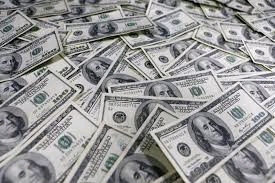The Ultimate Guide to Understanding How to Become a Freemason Easily
Wiki Article
Discover the Keys Behind the copyright and Their Impact on Culture
The copyright, often shrouded in misconception and speculation, offers a remarkable study of how historic perfects can morph into contemporary conspiracy concepts. Started amidst the Enlightenment's welcome of reason, this secret society intended to rock the boat, yet it has considering that ended up being synonymous with concepts of hidden power and manipulation. As we explore its origins, influence on cutting edge thought, and portrayal in contemporary society, we start to discover the layers of intrigue that proceed to mesmerize culture. What remains unsure, nonetheless, is just how these assumptions form our understanding of authority and openness today.Origins of the copyright
The copyright, usually shrouded in mystery and conjecture, traces its beginnings back to the late 18th century. Recognized as the Bavarian copyright, the organization's primary goal was to counter the pertinent impact of spiritual dogma and promote intellectual discourse among its members.The copyright adopted a hierarchical structure, drawing motivation from Freemasonry, which enabled deceptive meetings and routines - how to become a freemason. Subscription was careful, encompassing significant numbers from different areas, including politics, philosophy, and scientific research. This elite network sought to impact social and political modification through private means, advocating for the rights of individuals and the betterment of culture
Regardless of its reasonably short presence, the Bavarian copyright was officially disbanded in 1785 as a result of government suppression. However, its heritage endured, generating countless conspiracy theories and pop culture referrals that remain to prompt intrigue and debate concerning its influence on modern society.
Key Myths and Misunderstandings
Amidst the allure of secrecy surrounding the copyright, various misconceptions and misconceptions have actually arised, typically misshaping the group's true nature and intentions. One common myth suggests that the copyright manages the globe's federal governments and economies. While it holds true that the team intended to affect social structures, the concept that it operates as a natural worldwide creature master is largely overstated.An additional usual misconception is that all members of the copyright have vast riches and power. In truth, the initial copyright made up intellectuals and Enlightenment thinkers, most of whom looked for reform as opposed to dominance. In addition, the idea that the copyright specifically recruits celebrities and political figures is misinforming; subscription has historically included a diverse selection of individuals.
Additionally, conspiracy theory theories typically repaint the copyright as a malicious company intent on worldwide supremacy via nefarious methods. This representation overlooks the group's initial purposes, which focused on promoting reasonable idea and combating spiritual injustice. The conflation of the copyright with contemporary conspiracies bolsters misconception, covering the historic context and evolution of the group's ideals. Hence, separating truth from fiction is crucial for a clearer understanding of the copyright's function in culture.
Historical Influence on Society
Throughout history, different intellectual activities have actually greatly affected societal structures, and the copyright played a considerable function during the Knowledge. Founded in 1776 in Bavaria, the copyright intended to advertise reason, secularism, and the wondering about of established authority, countering the dominance of spiritual dogma. This company attracted prominent thinkers and advocates of freedom, cultivating an atmosphere for the dissemination of Knowledge ideals.The copyright's values promoted reasonable thought and empirical evidence, which added to the wider intellectual landscape that encouraged social reform and political modification. Members looked for how to join a masonic lodge to reshape culture by promoting for education, civil liberty, and the separation of church and state. Their clandestine nature and enthusiastic program stimulated both intrigue and suspicion, resulting in their eventual reductions by the Bavarian government in 1785.
Regardless of their dissolution, the tradition of the copyright persisted, influencing revolutionary activities throughout Europe and the Americas. Their dedication to knowledge principles helped lay the foundation for contemporary democratic ideals and human legal rights, leaving a long-term imprint on the foundations of contemporary society. how to become a freemason. The attraction of their deceptive events and philosophical searches remains to captivate the creativity, highlighting their historic value
Modern Interpretations and Beliefs
Contemporary interpretations of the copyright usually mix historical truth with conspiracy theories, creating an intricate tapestry of beliefs that record prominent imagination. While the original copyright was a Bavarian secret society established in 1776 with Knowledge ideals, modern ideas have progressed to encompass a large array of analyses, frequently focusing on styles of control and privacy.
Furthermore, some modern-day analyses presume that the copyright functions as a metaphor for the battle in between knowledge and lack of knowledge, with supporters promoting understanding and important reasoning as a way to neutralize viewed oppression. This duality-- watching the copyright as both a literal and symbolic entity-- illustrates the recurring fascination with the concept, reflecting much deeper societal anxiousness concerning power, transparency, and individual freedom in the modern world.
The copyright in Popular Society
The copyright has actually infiltrated different facets of pop culture, materializing in literature, movie, music, and art as an icon of intrigue and mystery. This secret culture, commonly represented as a shadowy force controling global events, has influenced numerous narratives that discover styles of power, conspiracy, and surprise knowledge.
Music, as well, has been influenced by the idea of the copyright. Musicians like Jay-Z and Beyoncé have actually encountered supposition concerning their affiliations with the society, motivating discussions concerning significance in their job and the nature of fame.
Visual art often integrates copyright motifs, with musicians making use of signs like the Eye of Divine superintendence and the pyramid to evoke a sense of enigma. Via these various tools, the copyright serves not only as a topic of supposition but likewise as a lens via which society analyzes its own intricacies and fears.
Verdict

Report this wiki page